Search for articles, topics or more
browse by topics

Search for articles, topics or more

The artist Claudia Vieira describes her practice as being “one continuous line, starting in 2001 first on paper, then on the wall, to finally reach actual space.”
Claudia Vieira is a Brazilian-American artist based in New York. Her work examines the relationships between individuals and their environment, using ink, tape, or charcoal to create single, unbroken lines that transform three-dimensional spaces into immersive environments. Her installations span the walls, ceilings, and floors of spaces, creating site-specific architectural topographies.
For Vieira, performance is an act of connection between body and space. She explores the body both as a subject and as medium, and her practice often manifests as live installations, with the public invited to watch as the artwork unfolds. "I agree with Richard Serra that Drawing is the most direct expression of thought,” says Vieira. “It can also express emotions, where objects and people are the connecting lines between imagination and reality.” Vieira’s work is represented by Praxis Gallery in NYC and her projects have been exhibited in Brazil, Italy, Germany, Japan, and now in Miami at Molteni&C’s flagship store.
To mark Design Miami 2022, Vieira was invited to transform the Miami flagship with a live performance. The installation was curated in collaboration with Alphaa.io, led by its head curator Iman Mazhar. Ahead of the installation, scheduled to take place on 30 November, M Magazine caught up with Vieira to delve into the influences behind her work, how she hopes to translate her practice to the showroom, and what it is like to take her work outside of the traditional museum and gallery setting.
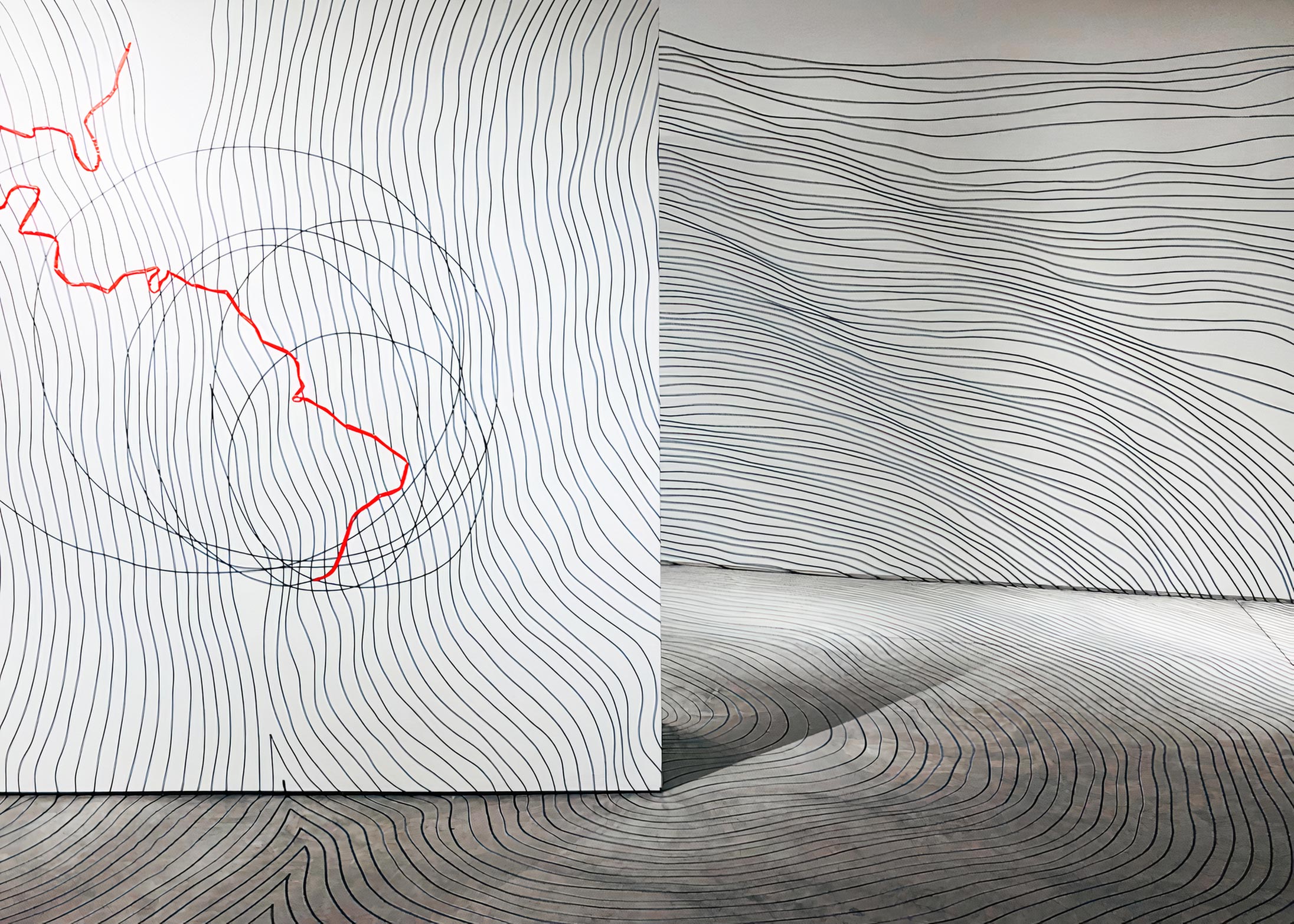
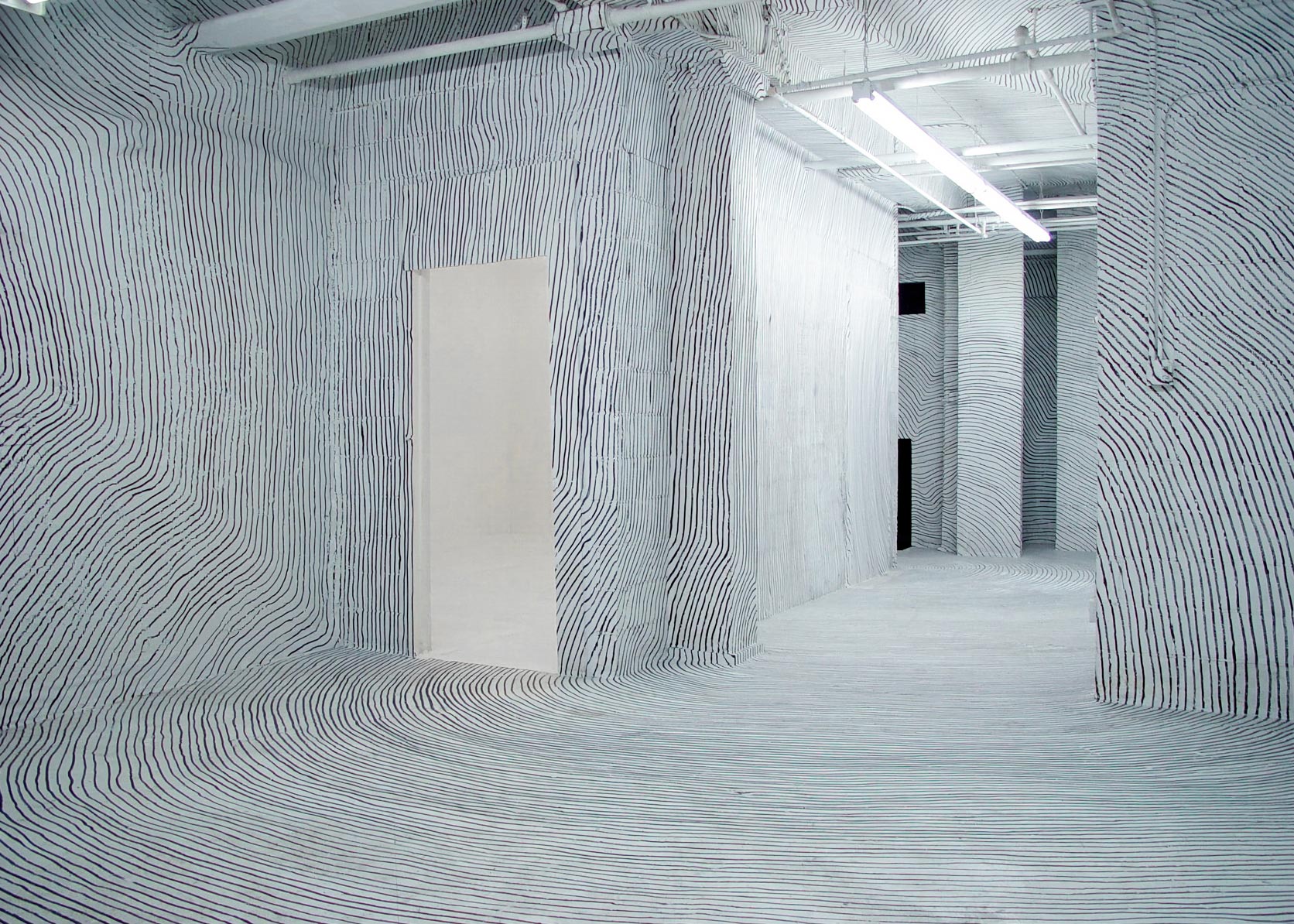
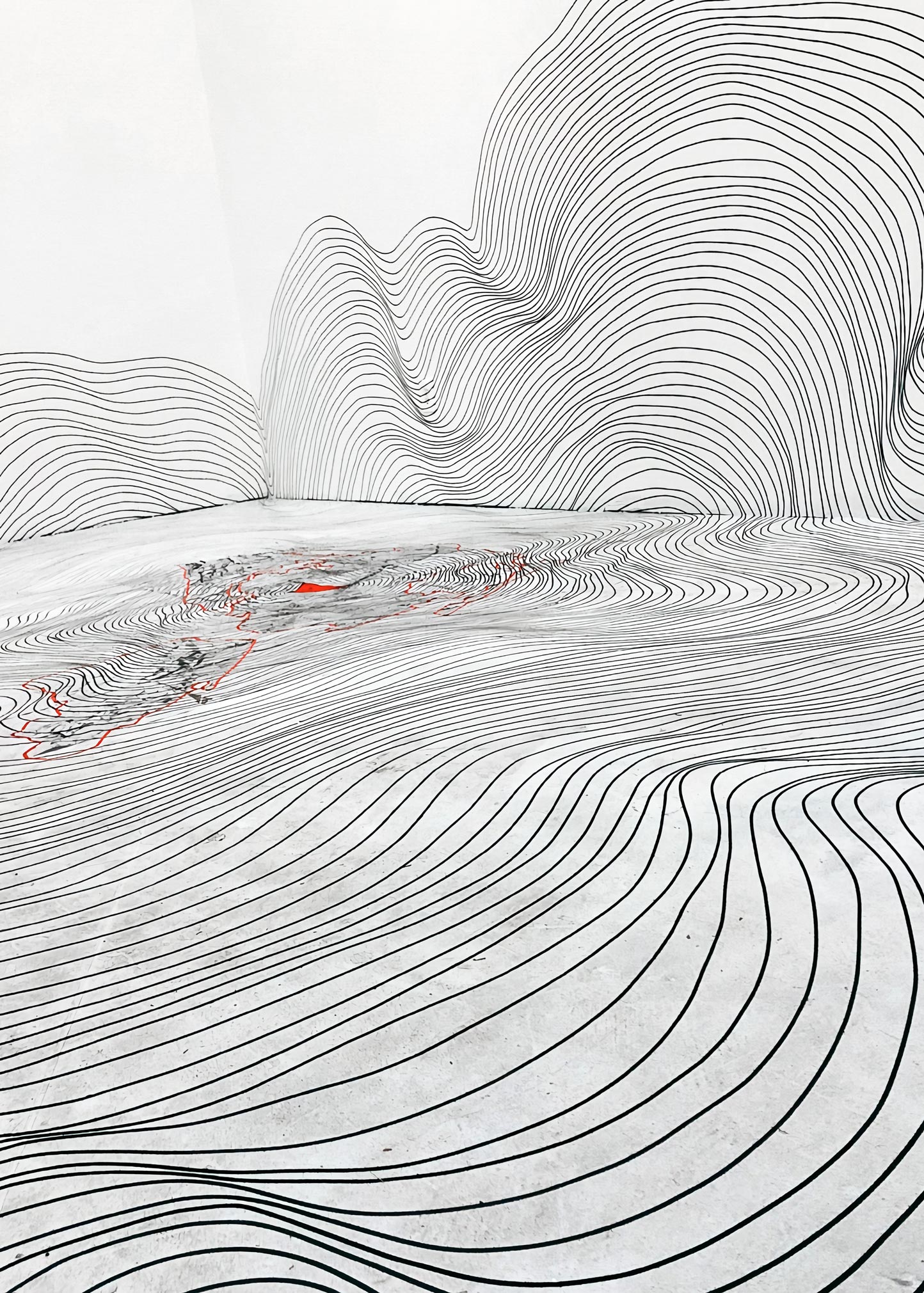
What drew you to work with Molteni?
Claudia Vieira It's an exciting challenge for me to work with a furniture designer; I see it as my own way to make “form follow function”. I have a profound connection and interest in architecture. It was stimulating to see Molteni&C’s creative director Vincent Van Duysen’s work, the architects who have influenced Molteni, the rigour and artistry reflected in the company's products. I think an important aspect we share is the interest in nature and human experience.
What influences your work?
My father was an architect, although he ended up working as a farmer. I grew up on our farm in the south of Brazil. I have always lived in close contact with nature and the landscape. The endless horizon and quietness have been imprinted deeply in my mind. I lived in Europe in my 20s and moved to New York in the 90s and the contrast between the countryside and a cosmopolitan city like NYC is the perfect balance for my practice. Artists such as Robert Smithson, Ad Reinhart, Richard Long and the Brazilian Lygia Clark have been important influences on my work.
I am also very influenced by Eastern philosophy, particularly Zen Buddhism. My practice is connected to ideas about transcendence, consciousness, and ways humans interact with the environments that they live in. I tap into my experience as a human being, using my body and drawing to create a language. My art spontaneously becomes a performance as I work. It's a kind of meditation through drawing.
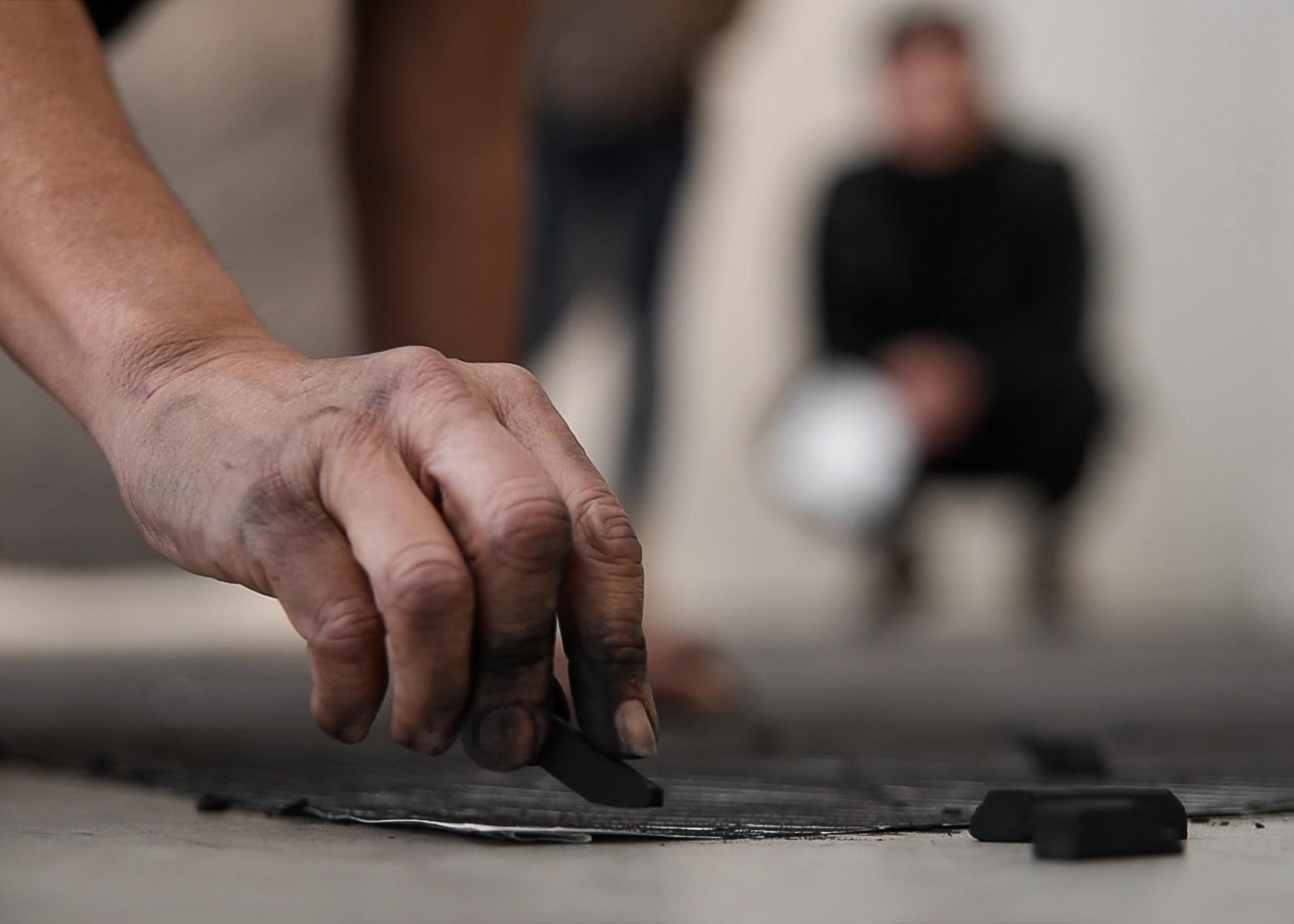
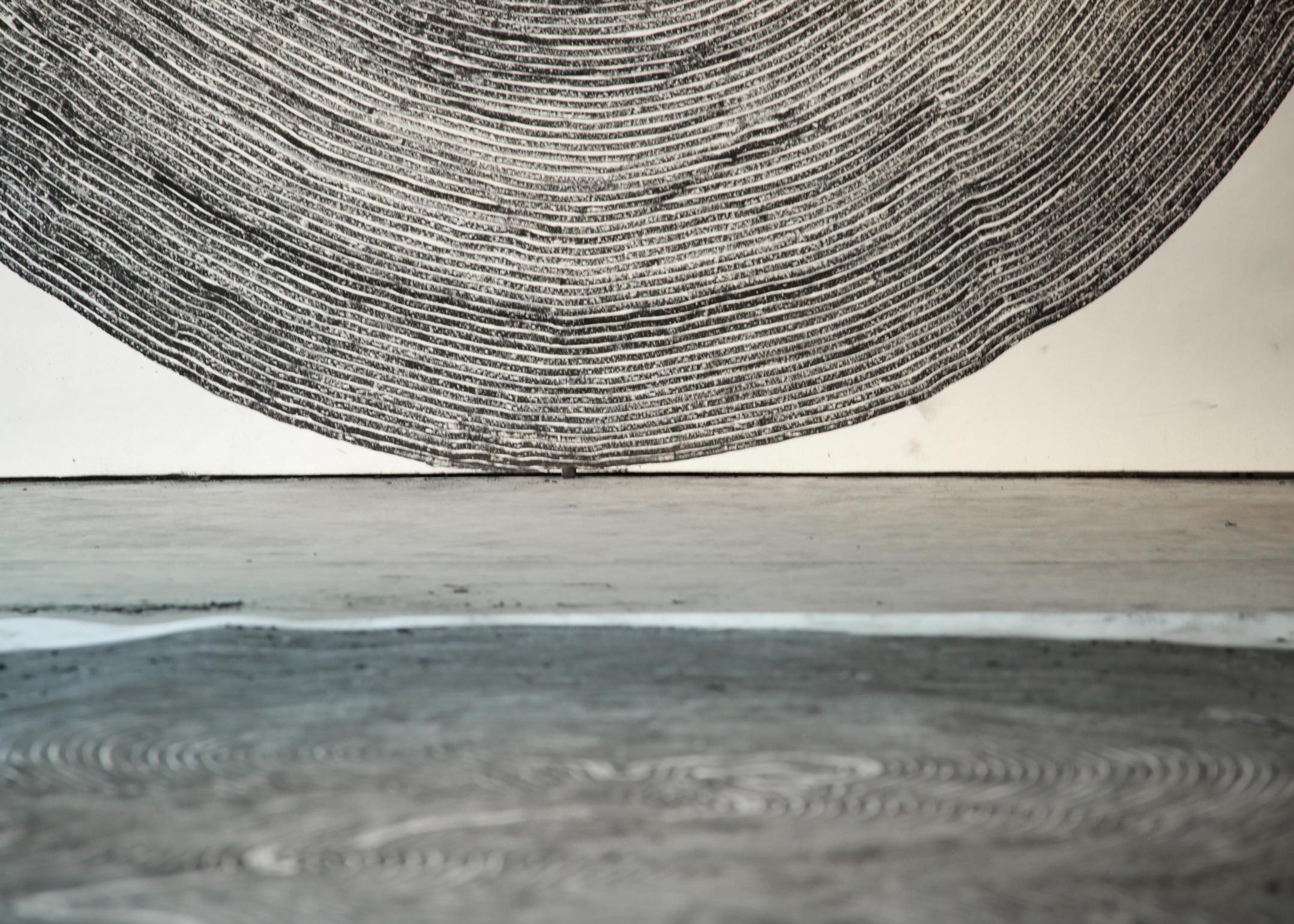
How do you prepare for a show? How much of your works are pre-planned and how much of them depend upon on the final performance on the day?
I reflect a lot about the work: basically I live the work. When I start thinking about a project, I focus on that completely. I normally don't do two projects at the same time.
The challenge is that Miami is a totally different city from New York, where I am based, and that will probably be reflected in the project. I was on-site at the Molteni store for around three hours and came up with a set of ideas for how to solve this problem as opposed to plan in advance. The solutions are seemingly very simple, but simple is not necessarily easy. Ultimately, I do not know how the artwork is going to turn out.
What qualities are you hoping to explore in the Molteni space?
I'm thinking that in Miami the artwork is going to be more fluid, like a dance through the showroom. The space is totally different compared to where I typically work. It's much larger than a gallery, but with a low ceiling, so it's intimate as well.
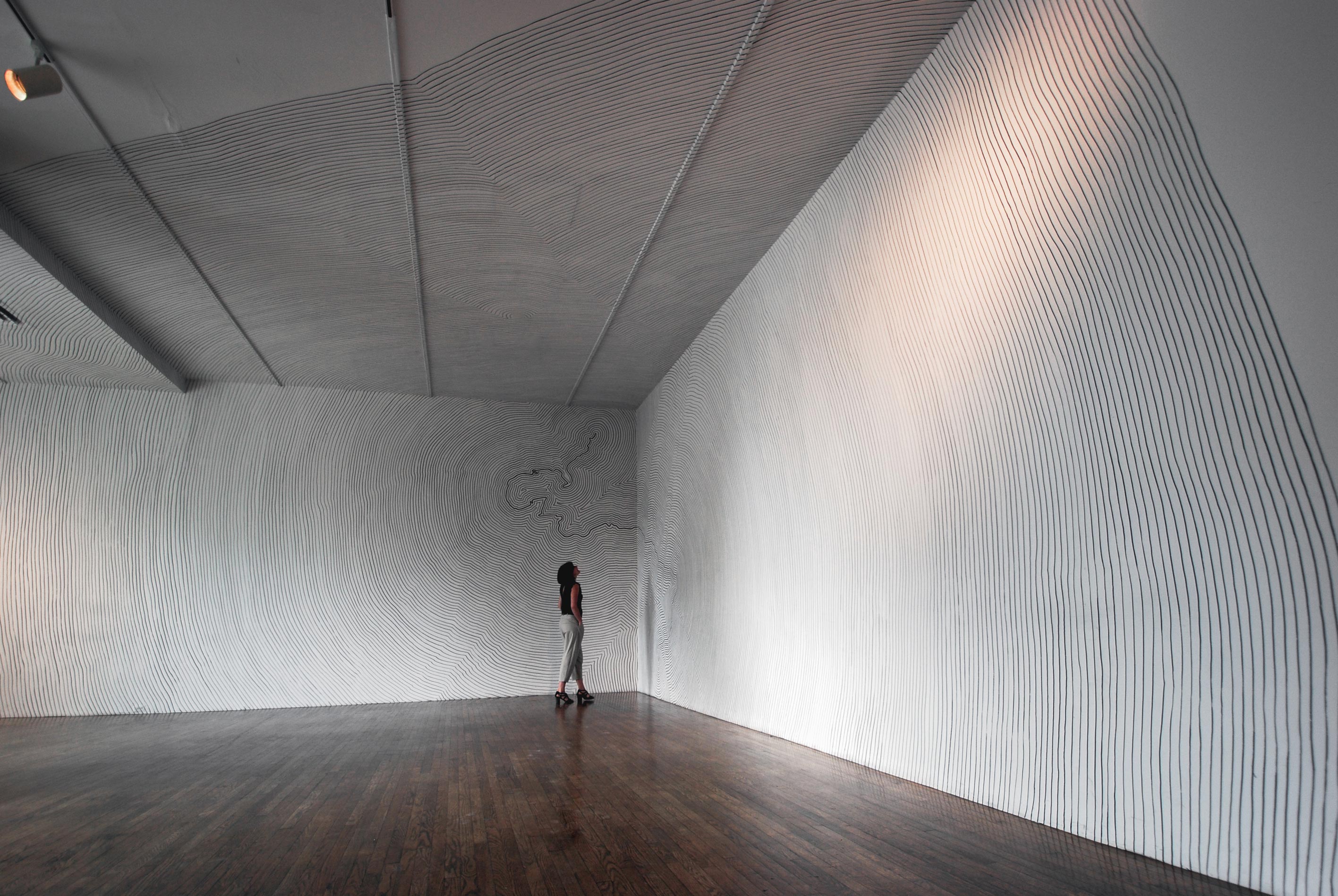
You mention experimenting with white tape as a possible drawing medium for the Molteni store space. What was the motivation behind your choice of colour and the materials you use in your artwork?
I have used black and white in my work for a very long time – I love it. I like the directness, the strength, and the clarity. I like how it is balanced; dark and light.
I really love that I need to move my entire body to create the work, my art. I don't draw only with my hands, I need to use my legs, my arms, my entire body. How do I access the surfaces if they’re high up? Sometimes I use devices to give myself height, ladders, chairs lately also milk crates. In the future, it would be wonderful to use options like Molteni furniture that could become part of the installation itself. For this performance, I will probably use milk crates – they are easy to move as they are light and small.
Your works are grounded in a concept of the drawn line that you transport to a three dimensional medium. What about this move between the dimensions appeals to you? Why make the line intensely spatial?
I've always been interested in space and the passage of time. It’s hard to answer quickly, but the first word that came to mind is “physicality”. It is very important for me. I’ve biked for more than 20 years, I’m a horseback rider, dancer, practised Tai chi and now yoga. I need to move my body constantly. It's not only about the body but also the mind. Breathing is crucial too, as it is a way to raise consciousness. Movement is a form of meditation: it makes your mind bright, positive, active and creative.
I was talking with a friend about my work and she said, “You're actually bringing life into the space of the showroom.” Materiality and tactility are also important factors as I basically sculpt the space with my hands. When I create an environment I touch the entire surface of the space and that is key to its final form, the strong connection of my body and my mind during that specific time results in “presentness”.
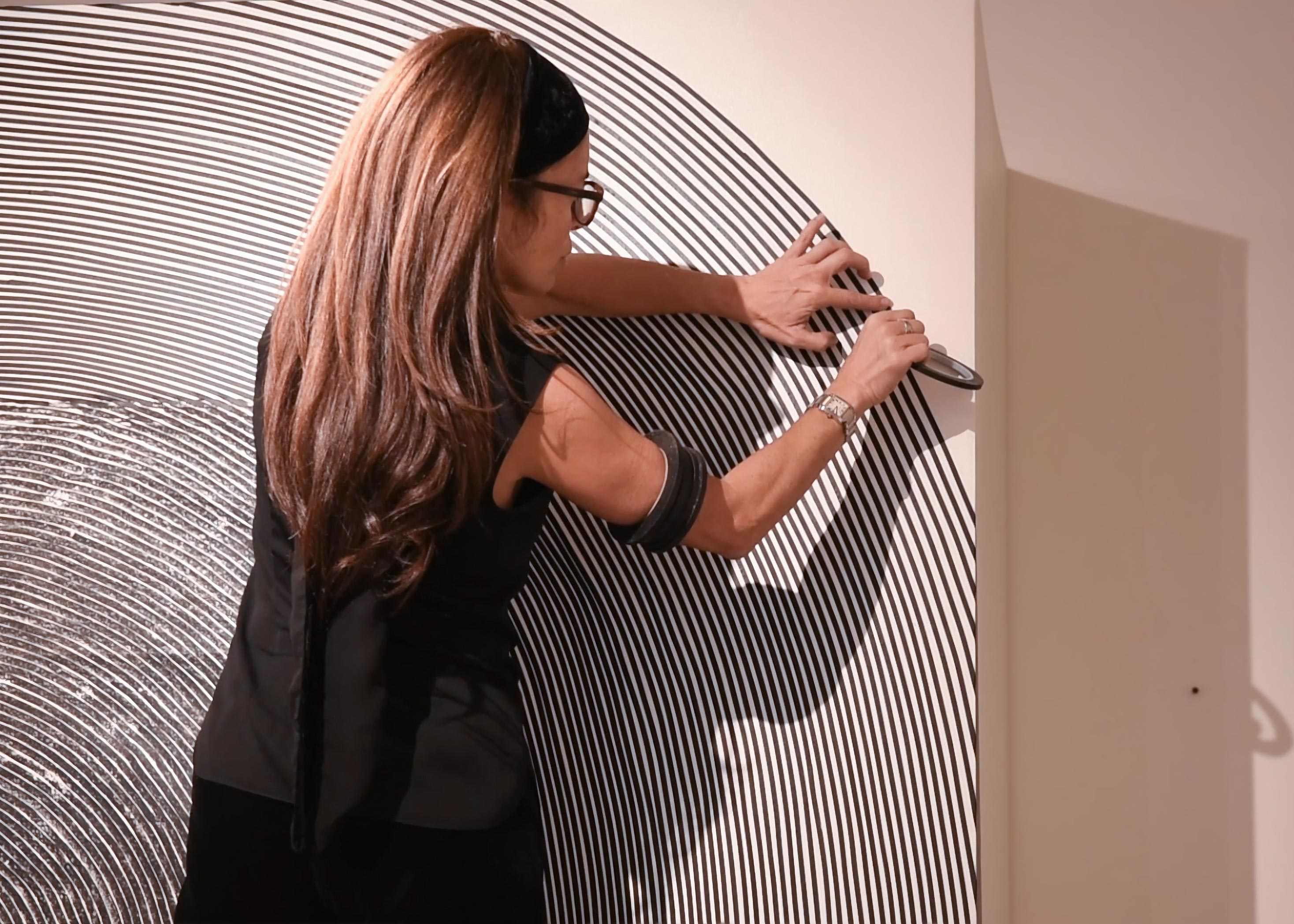
What is it like to collaborate with a company like Molteni instead of an institution like a gallery?
There’s an interesting thing about working with a furniture company because it's practical, it has a function. The material is concrete. Ideally, working in a designed space with furniture that has a practical use connects me with the public on another level whereas, in an art setting, the public often assumes a position that is more detached from everyday life. With this performance, I want the viewer to feel closer to the process of creating an installation. My goal is for the performance to be a closer, shared experience with the public.
There’s a beauty of working with a furniture company because it exists, it has a function. Its material is concrete. It makes the artist more connected with the public, instead of the public being the detached observer of art that can sometimes feel very far away. With this project, we want to be at the same level of human experience as the viewer.
The photographer Jeff Burton is known for the cinematic quality of his work: bathers by a hotel pool become a study in saturated colour; tanned bodies are seen at one remove, distorted by mirrored surfaces; a woman’s glance is glimpsed through a car’s rearview mirror.
Lunar New Year is the most important day in China’s lunisolar calendar.
The holidays are a time to eat, drink and make merry – the most convivial time of the year.
Thanks for your registration.